First: What was going on during cold war? 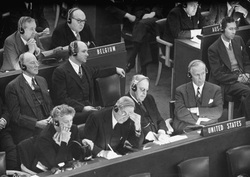 Here’s a little context before treating this subject. The Cold War is known as the chain of events that raised intense rivalry and tension between the world superpowers and their respective allies, the United States and the USSR. The name “war” can be somewhat misleading though, since there was never an actual war between countries, but rather competition and shows of power to intimidate and threaten the opposite side. The US and the USSR were present and participating directly or indirectly in many foreign conflicts throughout the second half of the 20th century. Disputes such as these include but are not limited to the Korean War (1951-1953), the Vietnam War (1955-1975) and the Cuban Missile Crisis (1962). Other events such as the Space Race and the Berlin and Suez crisis are also included, but in this article we will focus on the former three.
The UN has had an important role in international relations since its foundation, and in times of conflict, meetings were still being held, used as an organized and respectful ground for debating and reaching solutions. Here are some of the important resolutions made to respond to these world-scale problems the UN was faced with.
Korean war 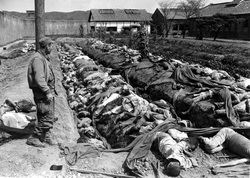 The Korean War is the belic conflict that came to be because of the different ideologies in North and South Korea. The North, supported by the USSR and China, followed a communist government, while the South followed capitalist ideologies. A war broke out on June of 1950. The UN responded quickly in a session held in December 1951, already addressing the issue with the proposal of the “UN Korean Reconstruction Agency”, urging the countries to negotiate a diplomatic solution. On the 5th of February the next year, the UN proposed extraordinary sessions to treat the resolving of the “armistice in Korea” to be held throughout the year. These actions prompted officials to take the matters into discussion, hoping to reach a solution as soon as possible. During December of 1952 a major advance was made. An agreement was reached to state terms of the release of war prisoners, respecting their rights and facilitating their return to the country. This was very important to the terms the war was being held in, since it eased tensions between both sides. The next year, the Armistice Agreement was signed by the two Koreas, successfully ending the war. The agreement restored the official borders between the two countries and ended the skirmishes. Further following of the situation took place in the UN forums of August 1953, inviting the presence of both sides in a future forum as well as requesting them to report their progress on the post-war resolutions.
Vietnam war 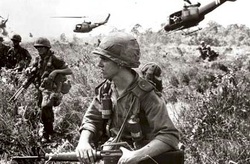 This was a very similar conflict between capitalism and communism as the one that happened in the Koreas. The North and the South Vietnam were trying to impose their ideologies on each other, as well as in the lands of Laos and Cambodia. The war started the 1st of November of 1955 and lasted for nearly 20 years until its resolution in April 1975. The UN tried to prevent the conflict with several attempts to reach a peaceful resolution but the Soviet side tended to reject those resolutions, as they knew the capitalist South would be the most benefitted in a war they were better prepared for. On the 14th of December of 1955, 16 countries were added to the United Nations organization, among them were Laos and Cambodia. This movement was not a coincidence, but a strategy to give these territories involved in the war a voice and a vote in the UN forums. In December 1971, the UN made very strong and firm resolutions regarding international security and the right of a country to decide by its own views. This clearly made an effect of the conflict in Vietnam, as in the following years, the United States president, Richard Nixon, retired the American troops from Vietnam. In the face of a losing battle and the wide opposition of the american people, president Nixon took back his declarations and admitted guilt of bad decisions he made, resigning his functions as president on August 1974. The year the conflict officially ended, in November 1975 the UN reached agreements over the strict implementation of the “Declaration on the Strengthening of International Security”. These actions further demonstrated the commitment of the UN to preventing violent intervention in foreign countries. Many old policies were reaffirmed and restructured, as well as new ones were implemented and urged to be followed.
Cuban Missile Crisis 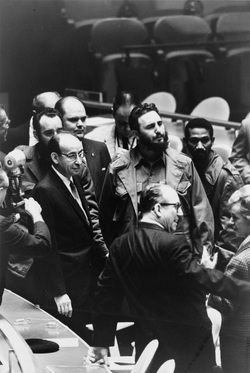 The Cuban Missile Crisis was a series of negotiations between the US and the Soviet Union addressing the issue of the nuclear missiles placed in Cuba by the USSR. This event caused extreme tension between the two world superpowers, each dealing with a threat that could have resulted in nuclear warfare. Taking place in 1962, it was a time in which the US requested the removal of missiles from Cuba, as well as the USSR demanding the removal of american nuclear weapons from Turkey. The year preceding the crisis, the UN reached a resolution expressing its concern about the testing of nuclear weapons. The resolution of November 1961 declares “earnestly urges the States concerned to refrain from further test explosions”. This proactive action stated the importance of proper control of the nuclear weapons. After the conflict broke out in 1962 and was resolved shortly after, the UN approved a resolution on December of the same year. This resolution made a more drastic proposal, the complete abolishing of the use of nuclear weapons. This particular proposal was widely accepted in the forum, since it assured a situation as delicate and dangerous as what happened in Cuba would not repeat itself ever again.
The Cold War ultimately proved to be a delicate issue that the United Nations had to deal with carefully and responsibly. However, preventive and active measures were taken into motion at the right times to contain violent revolts. It was a test for the unity and strenght of the UN.
A peacekeeping is one of the most effective tools of the UN for the assistant at host countries to navigate the difficult path from a conflict to peace. Peacekeeping has unique strengths, including legitimacy, burden sharing, and an ability to deploy and sustain troops and police from around the globe, integrating them with civilian peacekeepers to advance multidimensional mandates. UN Peacekeepers provide security and the political and peace building support to help countries make the difficult, early transition from conflict to peace.
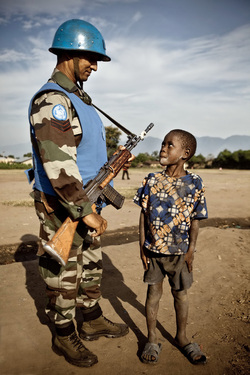 UN Peacekeeping is guided by three basic principles: - Consent of the parties;
- Impartiality;
- Non-use of force except in self-defence and defence of the mandate.
Peacekeeping is flexible and over the past two decades has been deployed in many configurations. There are currently 15 UN peace operations deployed on four continents and one special political mission – the United Nations Assistance Mission in Afghanistan (UNAMA) – led by the Department of Peacekeeping Operations.
Peacekeeping Operations
- MINUSTAH (Haiti)
- MINURSO (Western Sahara)
- UNMIL (Liberia)
- UNOCI (Côte d’lvoire)
- Minusma (Mali)
- MONUSCO (Democratic Republic of Congo)
- UNMIK (Kosovo)
- UNAMID (Darfur)
| - UNFICYP (Cyprus)
- UNISFA (Sudan)
- UNTSO (Middles East)
- UNMISS (Sudan)
- UNIFIL (Lebanon)
- UNDOF (SYRIA)
- UNAMA (AFGANISTAN)
- UNMOGIP (India and Pakistan)
| Success is never guaranteed, because UN Peacekeeping almost by definition goes to the most physically and politically difficult environments. However, UN has built up a demonstrable record of success over our 60 years of existence, including winning the Nobel Peace Prize.For further information, click here
 The UN has three different categories for Non-members: Non-self-governing, Non-member observer and Non-member State.
The non-self-governing states are colonized territories such as Montserrat (U K), U. S. Virgin Islands (USA) and New Caledonia (Fr). But there has been an issue, known as the Western Sahara conflict, where the Sahrawi people has been trying to get independence from Morocco in the last 43 years. Western Sahara is still not an independent country, therefore it will not be able to be a candidate for a place in UN.
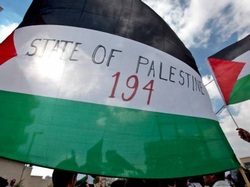 In the world, there are only two entities in the category of non-member observer: the Holy See and Palestine. These are not considered as States, but Palestine has been trying to get recognized by the UN members as one of them.
And as a non-member state we have the Cook Islands and Niue, both located in the South Pacific Ocean, near New Zealand. Both territories are not already accepted as states because they are in a free association with New Zealand. "Free association is a status distinct from that of full independence in that it allows the Cook Islands to maintain New Zealand citizenship, while administering its own affairs." (New Zealand's government, 2013).
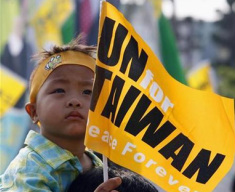 Finally, we can define a fourth unofficial category for Taiwan. China says it is part of its territory, not a colony, but a province. Taiwan claims itself a soveraign state. Taiwan knows that without China's licence it will never get to be a soveraign state, but in 2009 it tried to get the rank of Non-member observer such as Palestine and the Holy See, which was denied. Nowadays, Taiwan is refered in the UN as Chinese Taipei and it continues its efforts to get an international recognition.
Specialized agencies The UN got different programs to give a solution for the main problems in the world. The especialized agencies are lsited above.
odificar.  Food and Agriculture Organization (FAO)-Biggest agency of the United Nations that its objective is defeat hunger for all nations to raise nutrition. It is actully in Rome
International Civil Aviation Organization (ICAO)- Control the techniques to plan development safe air transport and defining protocols of for air accident investigation. Also resolves problems between two countries. Its headquarters are in Canada.
International Fund for Agricultural Development (IFAD)- Created thanks to the situation in Sahel in 1974, dedicated to eradicate rural poverty but only in developing countries. It is located in Rome
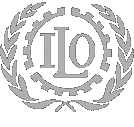 International Labour Organization (ILO)- Comes from the Treaty of Versailles and a previous aency in the League of Nations, and attends cases that involves labor issues. Is actually in Switzerland
International Maritime Organization (IMO)-Its principal purpose is to coordinate international maritime safety and related practices. It promotes cooperation between countries to reduce maritime pollution and be safe. It is conducted by five committees that are supported by another technical committees. Actually stands in United Kingdom.
International Monetary Fund (IMF)- Has an agreement with the UN, but may be considered as an independent agency that cooperates financially and negotiation assistance to this subject issues. Is in Washington D.C
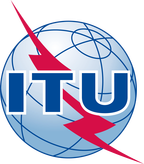 International Telecommunication Union (ITU)- Was created to standardize and regulate international radio and telecommunications. It is in charge of organizing interconnection arrangements between different countries to allow international phone calls. It is in Switzerland.
United Nations Educational, Scientific and Cultural Organization (UNESCO)- His objective is contributing to peace and security by promoting international collaboration through education, science, and culture in all nations. This runs in France.
United Nations Industrial Development Organization (UNIDO)- Was created to promote and accelerate industrial development in developing countries with the cooperation and helping values to accelerate economic growth. Its principal functions are to reduce poverty through productive actions, trading and better energy taking care of the environment. It actually is in Vienna, Austria.
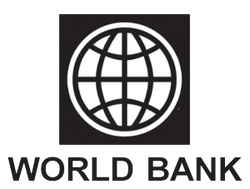 Universal Postal Union (UPU): The universal Postal Union is hearquartered in Switzerland, at the city of Berne, its main purposes are to coordinate the postal policies between nations.
World Bank Group: It is a part of the united nations system and have a formal relationship with the United Nations. The WBG is confomated by a group of five associated institutions the the International Bank for Reconstruction and Development (IBRD), the International Finance Corporation (IFC), the International Development Association (IDA), the Multilateral Investment Guarantee Agency (MIGA), and the International Centre for Settlement of Investment Disputes (ICSID).
World Health Organization (WHO): The world Health Organization (WHO) acts coordinating all the aspects of international public health. It was estblished in the city of Geneva, Switzerland.
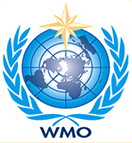 World Intellectual Property Organization (WIPO): The World Intellectual Property Organization (WIPO) is an agency who was established in Geneva, Switzerland. Its main purpose is to defend the creative activity and intellectal property in the world.
World Meteorological Organization (WMO): The World Meteorological Organization was established in 1950, it has became the specialized agency of the UN for weather, climate and related geophysical sciences .
World Tourism Organization (UNWTO): The UNWTO its was first established in London, United Kingdom in 1946, to replace the International Union of Official Tourist Propaganda Organization (IUOTPO). Serves as a forum for tourism policies and acts as a practical source for tourism.
FUNDS AND PROGRAMS 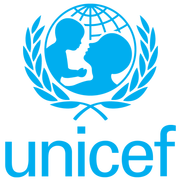 The programs and funds agreed to be executed by the agencies already mentioned are financed by donations. Above, a list showing some of them.
United Nations Children's Fund (UNICEF): Provides assistance to children who are living in an environment not favorable for their development.
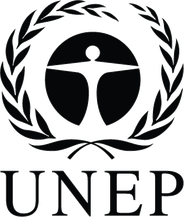 World Food Program (WFP): This program is looking to finish the hunger that is accusing the planet. During natural disasters, the WFP provides food to the damaged communities. United Nations Environment Program (UNEP): It is in charge of moderating the damage caused by human being to environment and find solutions to the problems that are already in motion. UN Women: It is the fund in charge of looking for the gender equality. For further information about the 8 programs and funds, click here
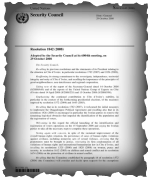 Resolutions in the UN model are the result of much negotiation and discussion over the topics addressed, they make suggestions or recommendations for which course of action to take in the future. Although, for resolutions to be redacted and approved there is a protocol involved. There are certain stages of development a resolution needs to clear in order to be accepted and implemented into the UN. Here is the general process they must undergo.
How they are Written First, a draft resolution needs to be redacted, which consists of a heading, preamble and an operative section.
Header: Consists of the following; a list of the countries that are authors of the resolution, called sponsors; a list of signatories, which is a list of countries that wish to see the resolution debated so they can propose amendments and further improving it; and a topic, a phrase starting with a verb in present participle stating the resolution’s purpose or goal. After the header, the rest of the resolution is written as a single sentence.
Preamble: Begins with the subject, being the assembly in which the resolution is being made, followed by a comma. All preambulatory clauses begin with a verb in present participle and are separated by commas. The preambulatory phrases stipulate the reasons why the topic is being treated and relevant past events and actions, they provide context for the operative section.
Operative Section: Requests the action or consideration of UN agencies to address the issue at hand. Operative clauses must be separated by a semicolon. This is the actual petition that the resolution is making to the rest of the countries in the forum.
If the draft resolution has enough supporters within the committee, then it can be submitted to the staff for debate. Most conferences require 20% of countries in the forum to support the resolution in order for it to be debated. If the resolution meets the needed percentage of approval, and a staff member assures it is relevant and in proper format, then it will be assigned a number and presented for debate.
Amendment process After a draft resolution has been approved it goes into the amendment process, which consists on making amendments, or changes, on the operative section of the resolution. There are two types of amendments, friendly and unfriendly ones, which consist on the following:
Friendly: An amendment made in the resolution to which all sponsors agree and sign upon making. With approval of all authors and the committee’s director, the amendment can be made right away.
Unfriendly: An amendment to which some or all of the sponsors disagree with. The committee will vote upon making unfriendly amendments; again, about 20% of the committee’s votes are needed for this type of amendment to take place.
After amendments have taken place, the committee will vote upon approving the resolution as a new UN official resolution. In this case, the majority of the committee must vote for the resolution in order for it to be approved, the assembly decides wether it to be passed or rejected.
The General Assembly - It discusses any matter arising under the UN Charter and make recommendations to UN Members. The Assembly meets every year from September to December
The Security Council - Mantains peace and security. When a threat to peace is brought before the Council, it usually first asks the parties to reach agreement by peaceful means. The Council has 15 members, including five permanent members: China, France, the Russian Federation, the United Kingdom and the United States of America. The other 10 are elected by the General Assembly on the basis of geographical representation for two-year terms.
The Economic and Social Council - Coordinates the social and economic work of the UN. It directs activities for the promotion of economic growth of developing countries supporting human rights and world cooperation.
The Trusteeship Council - Promotes the advancement of the inhabitants of those dependent territories and their progressive development towards self-government or independence.
The International Court of Justice - The International Court of Justice (ICJ) is the UN’s main judicial organ. There are 15 different countries' judges that settles legal disputes between nations only and not between individuals.
The Secretariat - A department with a total staff of around 16,000, drawn from some 175 countries that carry out the substantive and administrative work of the United Nations. It may bring to the attention of the Security Council any matter which, in his opinion, may threaten international peace and security.
The Beginings 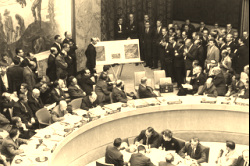 In 1945, when World War II reached its end, there was a need of Union between the countries from the whole world. 51 countries agreed in the consolidation of an international force in charge of the relations between them. In more than 65 years, the UN has treated topics such as economy, education, health... based on a paceful correlation between the actual 193 members.
The United Nations' headquarter has been located in New York since 1952; also, there are three buildings serving as "sub" headquarters in Swintzerland, Austria and Kenya. These headquarters are extraterritorial land, which means that the buildings of the UN are not part of any country.
How it Works 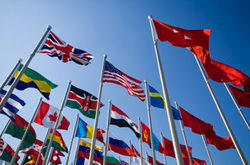 The main base of the UN is the UN charter, a document signed in 1945 by the first members of the organization; in its content the nations commit to follow the objectives specified in the document, they are also forced to accomplish those objectives following the UN processes.
The topics to disscus in the UN are divided in six basic departements: General Assembly, Security Council, Economic and Social Council, Trusteeship Council, International Court of Justice, and Secretariat. Actually, there are more than this primary divisions (15 more) but, those are the ones listed in the UN charter.
Basically, the UN is divided hierarchically in this order:
*Committees
*Commissions
*Boards
*Councils and Panel
*Working Groups and other
The UN also works with some NGO, has a project to reinforce the civil voice in democratic countries. Also it provides help to different CSO (civil society organizations). The point of the whole thing is to provide an environment of help, collaboration and partnership between the organizations.
In Brief All this heriarchy, organization, burocracy, is the performance of a single law known as the Rule of law of the UN. This, merged with the UN charter is the scence itself of UN.
In the words of the United Nation's general secretary: A principle of governance in which all persons, institutions and entities, public and private, including the State itself, are accountable to laws that are publicly promulgated, equally enforced and independently adjudicated, and which are consistent with international human rights norms and standards"
(UN's Secretary-General, 2004)
|




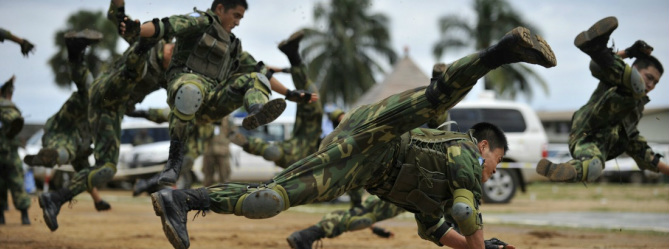

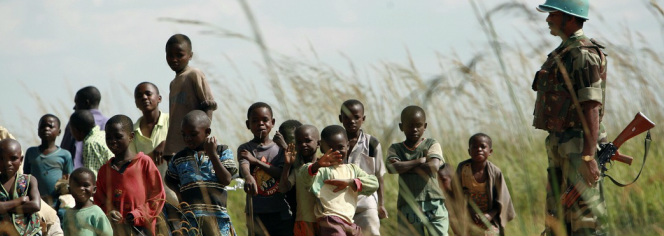








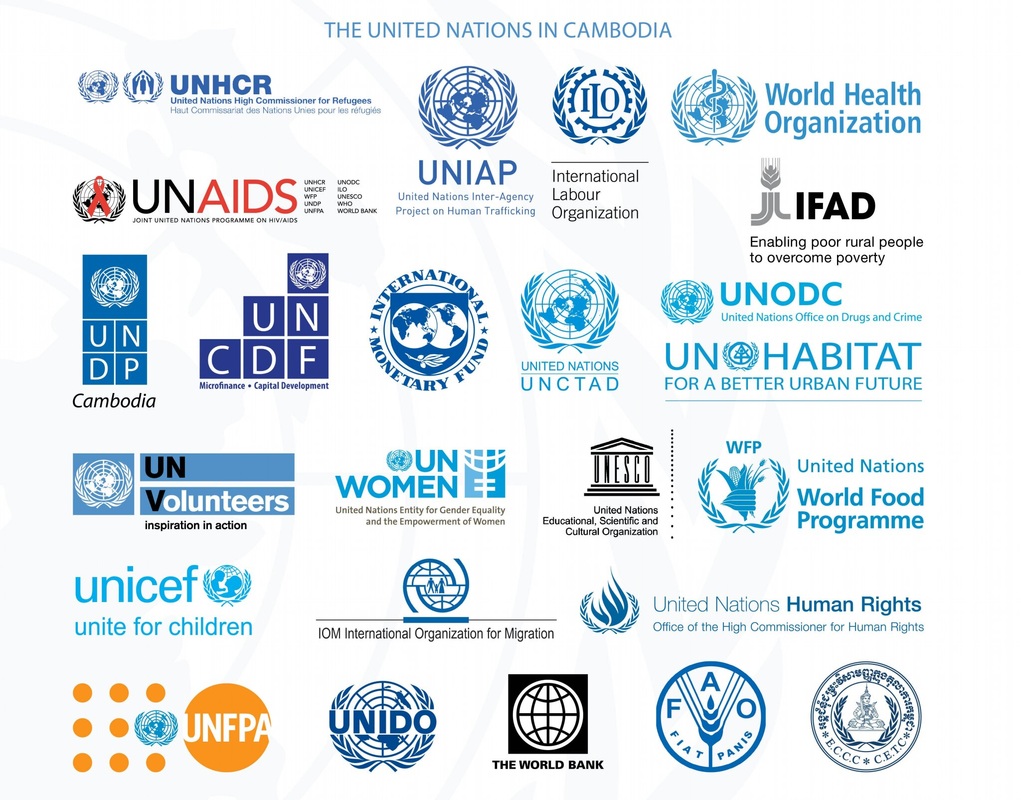


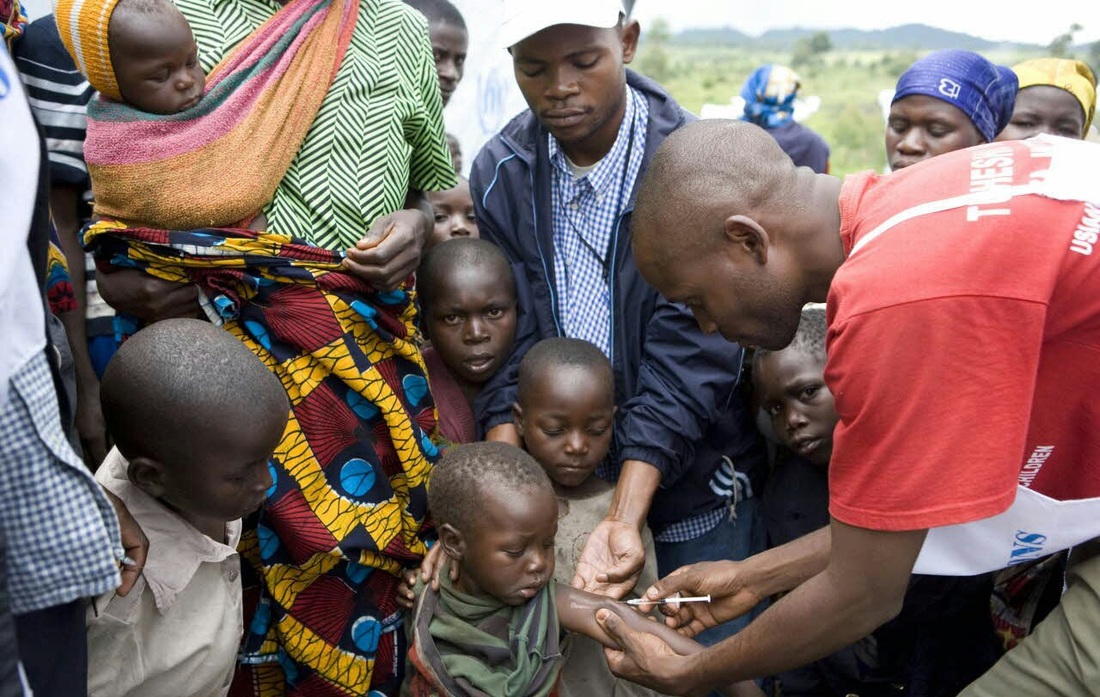

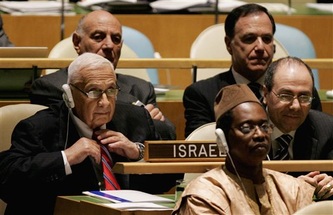
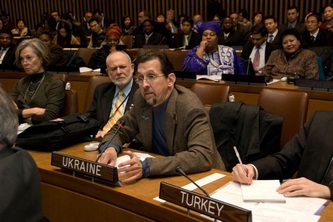
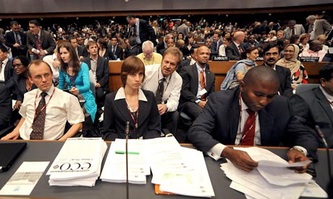
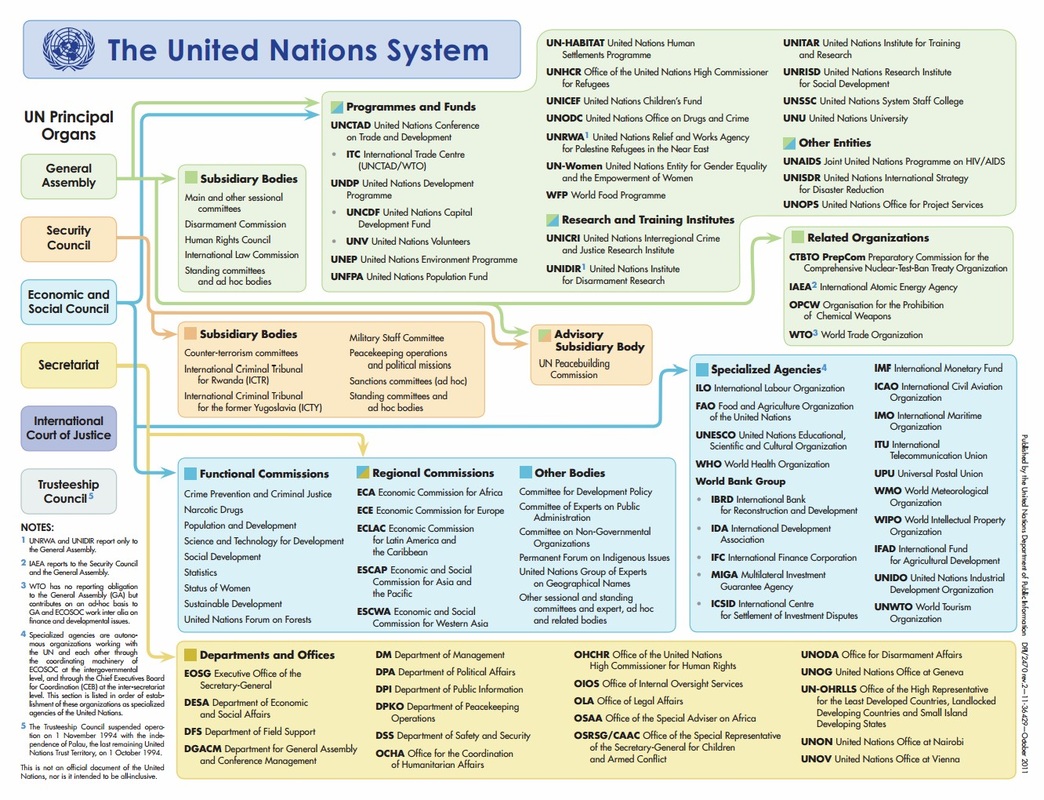


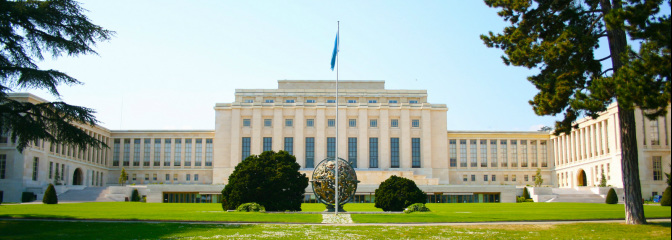
 RSS Feed
RSS Feed